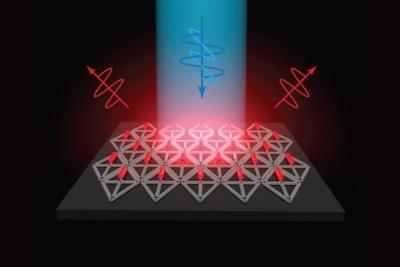MIT researchers precisely assemble quantom rods arrays using folded DNA scaffolds
Researchers from MIT have devised a new method to precisely assemble arrays of quantum rods, using scaffolds made of folded DNA. Using this method, the orientation of the rods can be controlled, which is a key factor in determining the polarization of light emitted by the quantum rods array.
The method starts by attaching the quantum rods to diamond-shaped DNA origami structures, built at an exact size required by the device. The structures are then attached to a surface, where they fit together "like puzzle pieces".






